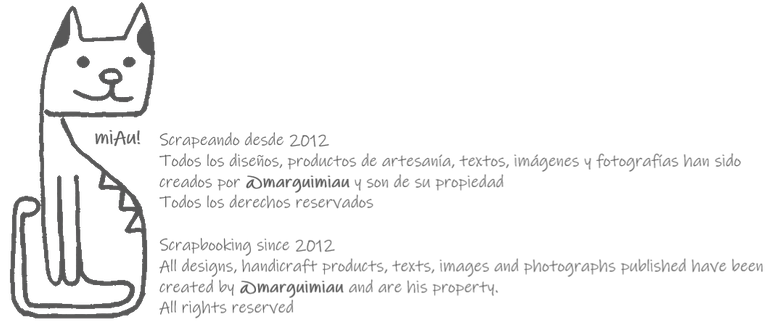¡Hola, Mundo!
Hace unas semanas os conté cómo surgió la inspiración para pintar un rinconcito de casa. Los colores llamativos y la luz me animaron a manchar un lienzo con este bodegón de rosas y amarillos y hasta ahora no lo había retomado.
Hi, World!
A few weeks ago I told you how I got the inspiration to paint a little corner of my house. The bright colours and the light encouraged me to stain a canvas with this still life of pinks and yellows and until now I hadn't taken it up again.
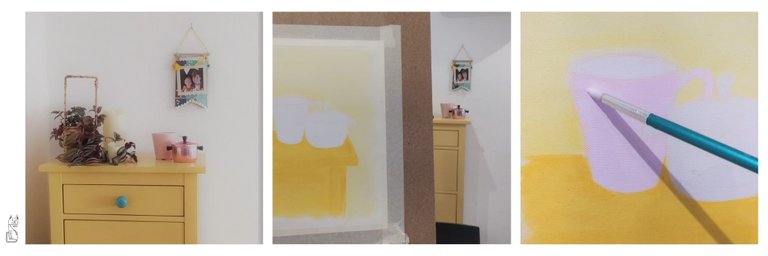

Me encantaría que me acompañaseis en el proceso, a ver si consigo darle forma a este proyecto. Los que lleváis tiempo conmigo sabéis que acabo de empezar con mis clases de pintura (cuando comencé con esta nueva técnica o cuando conseguí pintar una bonita tetera en monocromo), así que se puede decir que aprendo con vosotros (jeje).
Los materiales y herramientas que emplearé en esta actividad son los siguientes:
Un caballete con un tablero donde pegaré con cinta de carrocero la tela.
Un lienzo, sujeto al tablero con la cinta de carrocero.
Un paño para proteger la mesa de trabajo.
Pinceles sintéticos de punta redonda de varios tamaños (yo voy a usar, en principio 5, 6, 7, 8, 10).
Dos recipientes para el agua: uno para limpiar los pinceles (por lo que el agua cada vez se irá ensuciando más) y otro para cargar el pincel de agua (este agua se mantendrá limpia).
Dos paños para descargar el pincel y para secarlo. También lo puedo usar en un momento dado sobre el lienzo, para retirar o extender pintura.
La paleta: en este caso es un cartón de Tetrabrick abierto, así reutilizamos materiales antes de desecharlos para el reciclaje.
Pintura acrílica de la marca Vallejo, en diferentes colores:
- Blanco Titanium Rutilo
- Magenta
- Rojo Cadmio
- Siena Natural
- Amarillo Cadmio Oscuro
- Azul Ftalocianina
- Negro óxido de Hierro (no aparece en la imagen de materiales pues fue una decisión posterior incluirlo).
Un lápiz de sanguina (que no sale en la imagen) para esbozar sutilmente el dibujo.
I would love you to join me in the process, to see if I can give shape to this project. Those of you who have been with me for a while know that I have just started with my painting classes (when I started with this new technique or when I managed to paint a nice teapot in monochrome), so I can say that I am learning with you (hehe).
The materials and tools I will use in this activity are as follows:
- An easel with a board where I will stick the canvas with masking tape.
- A canvas, attached to the board with masking tape.
- A cloth to protect the work table.
- Round-tipped synthetic brushes of various sizes (I am going to use, in principle, 5, 6, 7, 8, 10).
- Two containers for water: one for cleaning the brushes (so the water will get dirtier and dirtier) and one for filling the brush with water (this water will stay clean).
- Two cloths to unload the brush and to dry it. I can also use it at any given moment on the canvas, to remove or spread paint.
- The palette: in this case it is an open Tetrabrick carton, so we reuse materials before throwing them away for recycling.
- Vallejo acrylic paint, in different colours:- White Titanium Rutile
- Magenta
- Cadmium Red
- Natural Sienna
- Cadmium Yellow Dark
- Phthalocyanine Blue
- Iron Oxide Black (not shown in the materials image as it was a later decision to include it).- A sanguine pencil (not shown in the image) to subtly sketch the drawing.


Con todo esto, lo primero que hacemos es realizar el encuadre del dibujo: yo he decidido quedarme con la esquina superior derecha de este mueble, para pintar la taza y el azucarero y que sólo se vea una esquina de la cómoda. Un esbozo sin mucho detalle, tan solo marcar las líneas principales, pues luego se va a cubrir todo de color, y será este el que vaya delimitando y creando los detalles.
With all this, the first thing to do is to make the framing of the drawing: I have decided to keep the upper right corner of this piece of furniture, to paint the cup and the sugar bowl, so that only one corner of the chest of drawers can be seen. A sketch without much detail, just mark the main lines, because later everything will be covered with colour, and it will be this colour that will delimit and create the details.
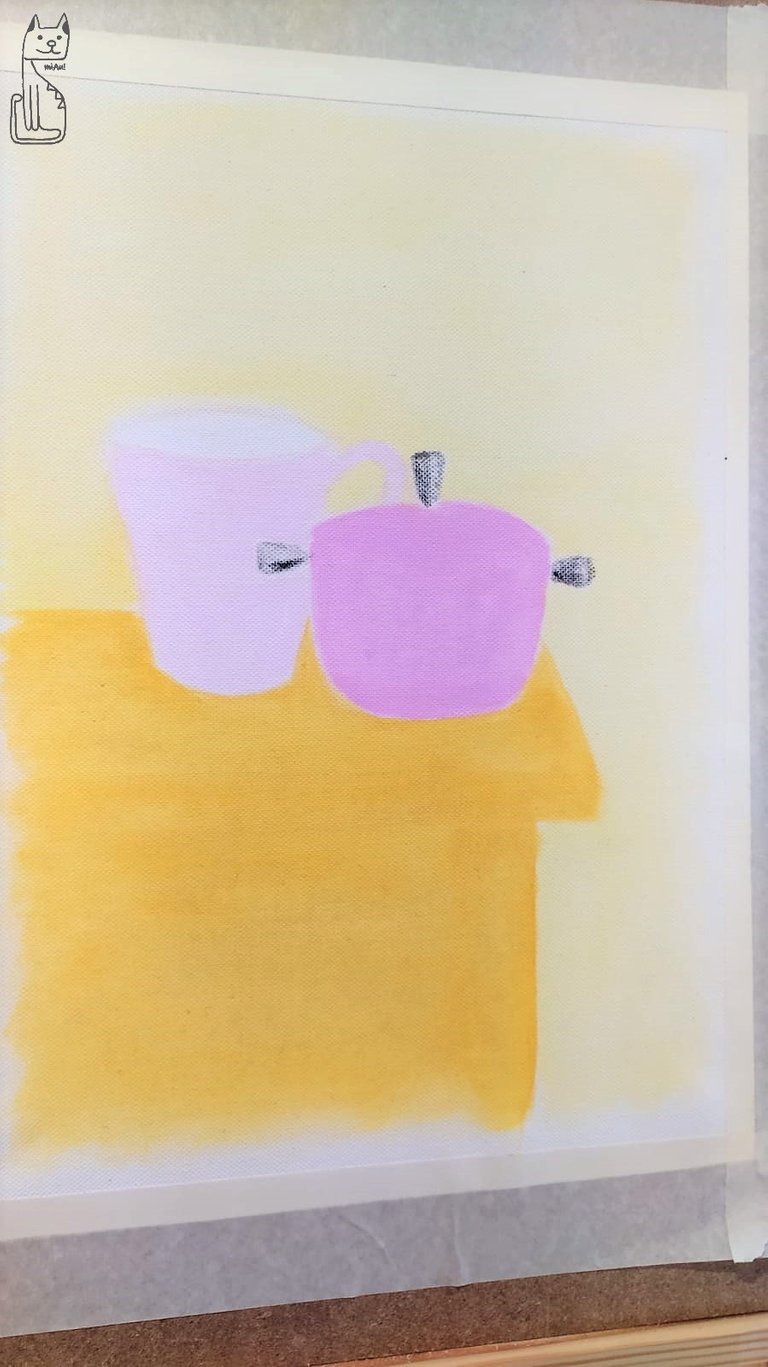

He manchado el lienzo con los colores de base, para ir delimitando áreas: un amarillo más fuerte (a base del amarillo cadmio y el siena), un amarillo más claro para el fondo (añadiéndole el blanco), y el magenta con blanco para la taza y con azul para el azucarero. Un pequeño toque de negro en las asas del azucarero. Queda todo muy plano, pero esto es sólo para ir encuadrando los diferentes volúmenes.
I have stained the canvas with the base colours, to delimit areas: a stronger yellow (based on cadmium yellow and sienna), a lighter yellow for the background (adding white), and magenta with white for the cup and blue for the sugar bowl. A little touch of black on the handles of the sugar bowl. It's all very flat, but this is just to frame the different volumes.
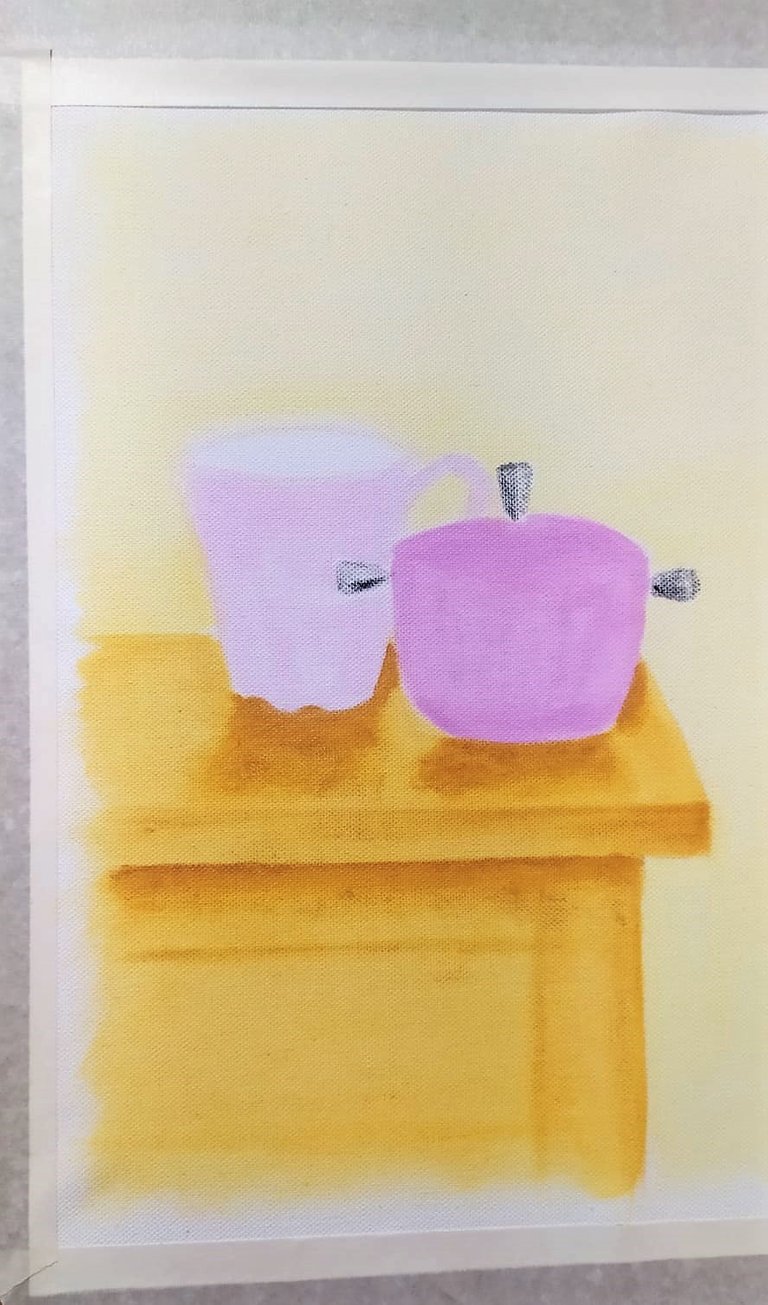

Ya vamos metiendo sombras y parece que los objetos van tomando relieve: empleamos el mismo color de base pero poniéndolo más oscuro. Por ejemplo, al mostaza de la cómoda, le he añadido más siena y rojo para oscurecer el tono y lo aplicamos justo debajo de la taza y el azucarero. También bajo la tapa de la cómoda, pues la luz incide desde arriba y crea esa línea de sombra justo ahí. Vamos creando a la vez unas líneas rectas que nos van a dibujar la estructura del mueble: cantos y cajones.
We are already adding shades and it seems that the objects are taking relief: we use the same base colour but we make it darker. For example, I have added more sienna and red to the mustard on the chest of drawers to darken the tone and we apply it just below the cup and the sugar bowl. Also under the lid of the chest of drawers, as the light falls from above and creates that line of shadow right there. At the same time, we create some straight lines that will draw the structure of the furniture: edges and drawers.
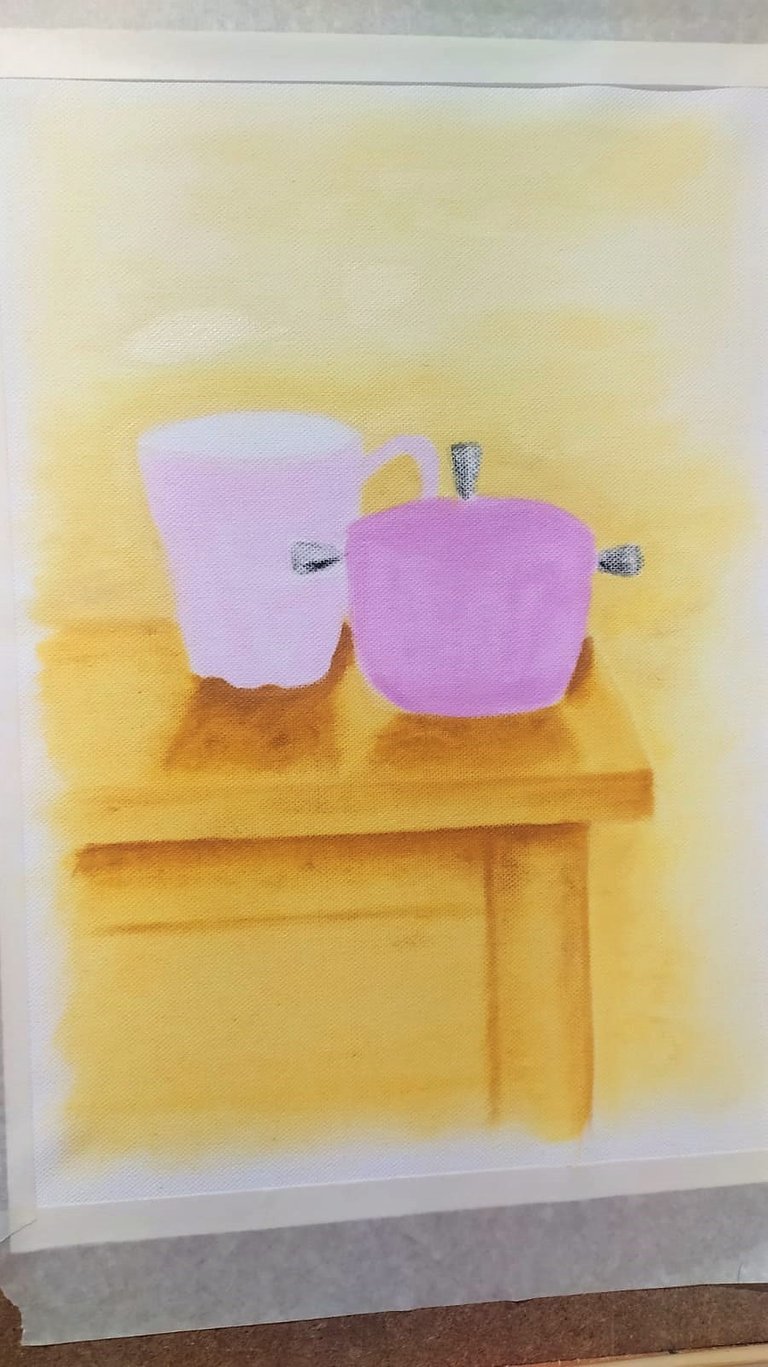

Poco a poco vamos añadiendo diferentes tonalidades a todo el cuadro en general. Es decir, vamos aplicado las pinceladas a la vez en todas las zonas: en la pared, en el mueble, en los objetos. No es aconsejable pintar, por ejemplo, de una vez la taza, y olvidarse del resto del cuadro. Debe hacerse de forma homogénea: las pinceladas, la mezcla de color, el estilo,...será homogéneo así en toda la obra, y verás cómo va evolucionado el cuadro en su conjunto.
Little by little we add different shades to the whole painting in general. In other words, we apply the brushstrokes at the same time in all areas: on the wall, on the furniture, on the objects. It is not advisable to paint, for example, the cup all at once and forget about the rest of the painting. It must be done in a homogeneous way: the brushstrokes, the mixture of colours, the style,... it will be homogeneous throughout the whole work, and you will see how the painting evolves as a whole.
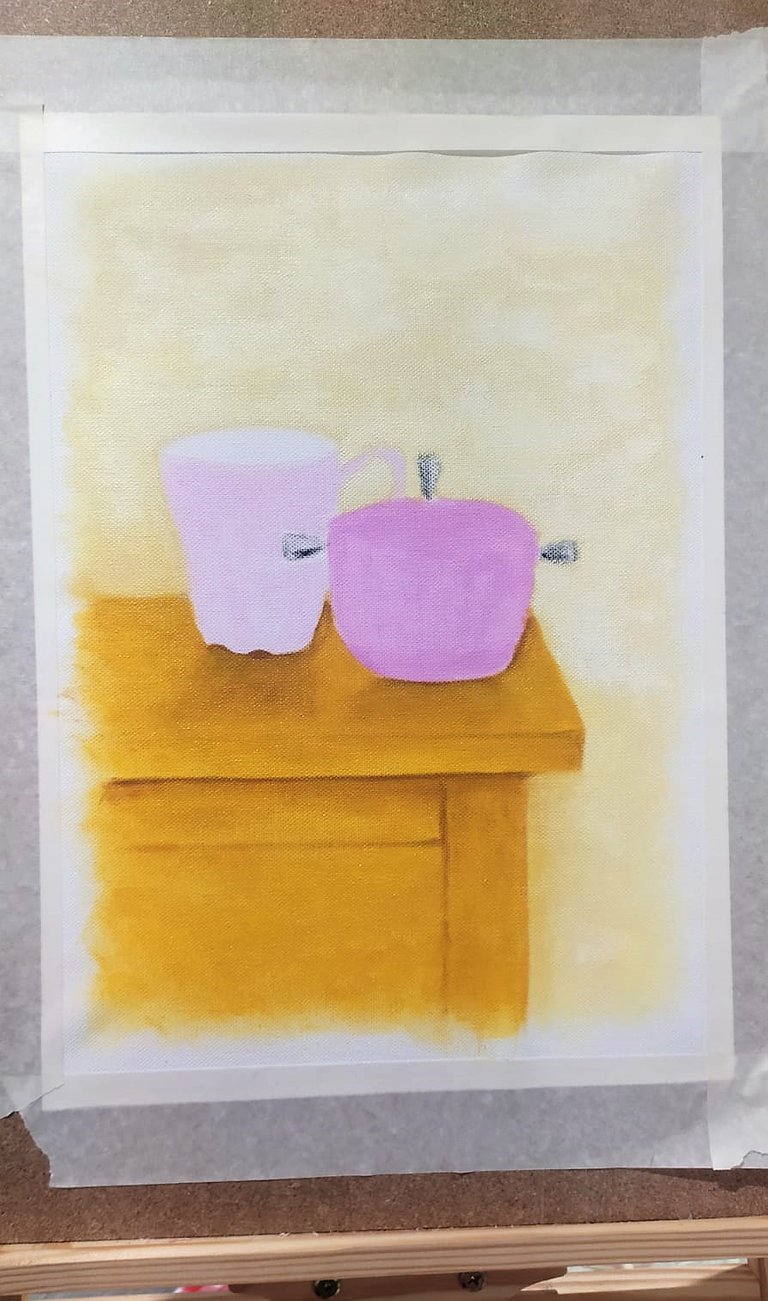

Así vamos subiendo poco a poco el tono de toda la pintura. Recuerda ir separándote de tu obra de vez en cuando (más bien continuamente) porque al verlo en la distancia apreciarás mejor las formas, el conjunto, la incidencia de las luces,...
In this way we gradually raise the tone of the whole painting. Remember to separate yourself from your work from time to time (more like continuously) because when you see it from a distance you will better appreciate the shapes, the whole, the incidence of the lights,...
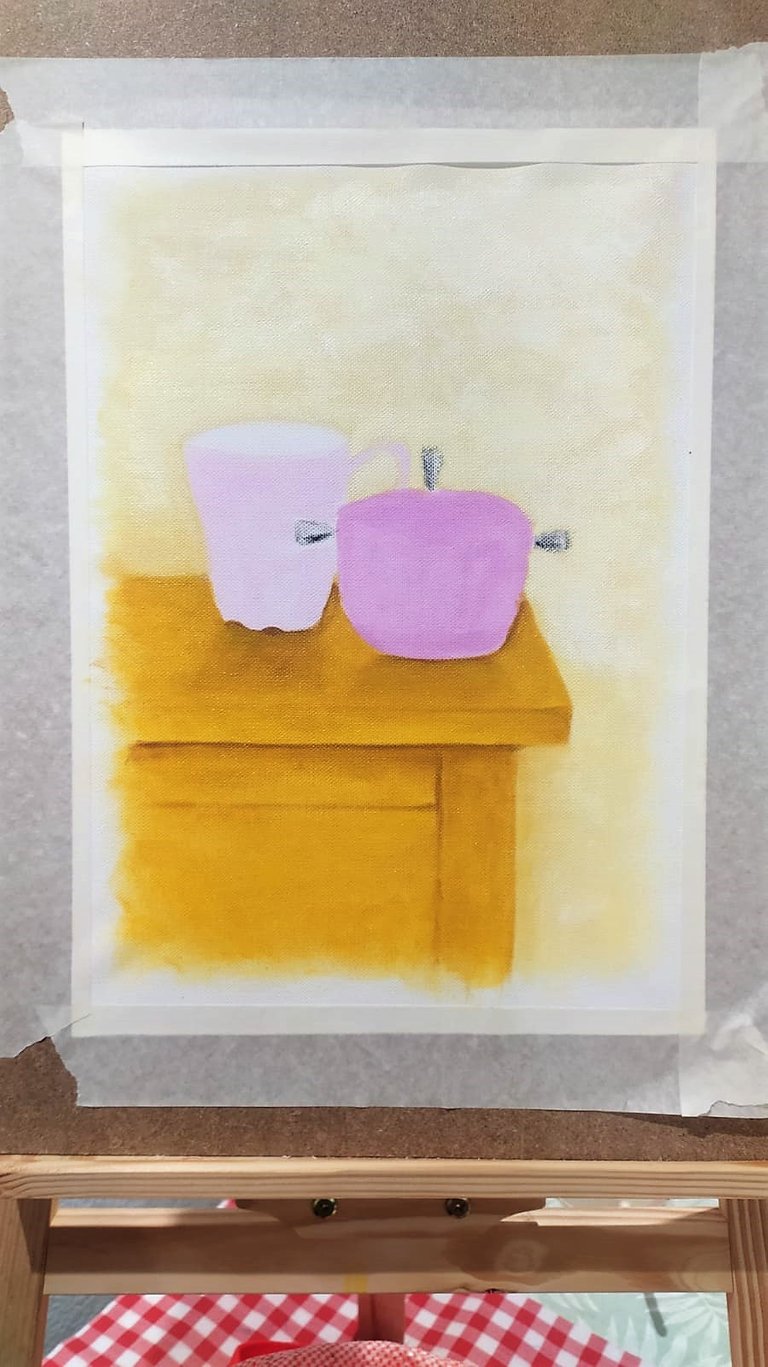

Vamos a dejar que se seque la pintura, aunque el acrílico no tarda en secar, necesita también su tiempo. Tengo la sensación de estar emborronando lo que estoy haciendo. Necesito parar y ver cómo continúo.
We are going to let the paint dry, although acrylic paint doesn't take long to dry, it also needs time. I have the feeling that I'm smudging what I'm doing. I need to stop and see how I continue.
Gracias por leerme. Encantada de tenerte por aquí 💛
Te doy la bienvenida a miAu!
Traducido gracias a la versión gratuita de DeepL
Imágenes editadas con la versión libre de Canva
Fotografías capturadas con mi teléfono móvil Xiaomi Redmi Note 8T
Thank you for reading me. Nice to have you around 💛
I welcome you to miAu!Translated with the free version of DeepL
Images edited with the free version of Canva
Pictures taken with my mobile phone Xiaomi Redmi Note 8T.
